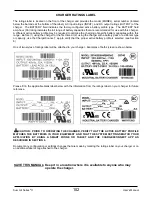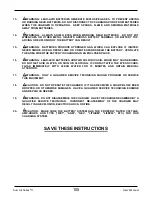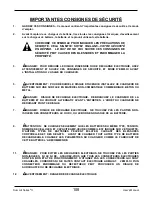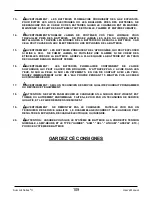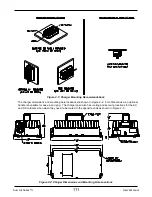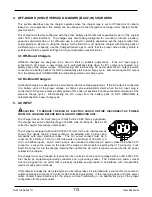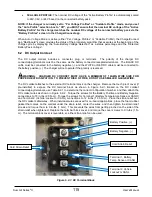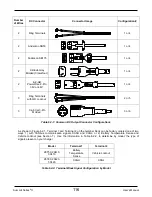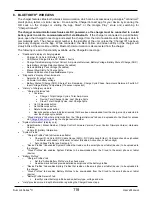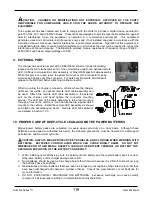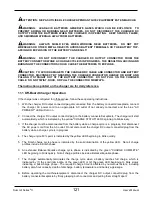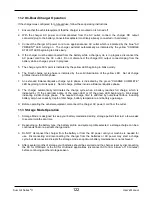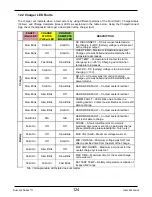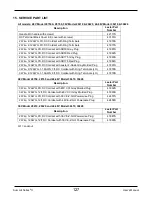
Summit Series
®
II
User’s Manual
4. OFF-BOARD (SHELF) VERSUS ON-BOARD (BUILT-IN) CHARGERS
This section describes how the charger operates when the charger type is set to Off-board or On-board.
Based on your application, this setting can be changed via the ChargerConnect app under “System Profile”
(see Section 8).
The charger was factory-configured with the active battery profile that was requested as part of the original
order from Lester Electrical. The charger was also factory-configured for mounting on-board a battery-
powered vehicle/machine or for off-board use in a shelf or portable application per the original order from
Lester Electrical. Before (1) using the charger for the first time or (2) using the charger with a battery pack of
a different type or capacity, use the ChargerConnect app to verify that the proper active battery profile is
selected and that the system settings match your application (see Section 8).
4.1 Off-Board Chargers
Off-board chargers are designed to be used in shelf or portable applications. If the AC input plug is
connected to AC power, a new charge cycle automatically starts when the DC output is connected to a
battery pack of the proper voltage. Disconnecting and reconnecting AC power while the DC output remains
connected to a battery pack WILL NOT automatically start a new charge cycle. Disconnecting the DC output
from the battery pack IS REQUIRED to automatically start a new charge cycle.
4.2 On-Board Chargers
On-board chargers are designed to be mounted on electric vehicles/equipment. If the DC output is connected
to a battery pack of the proper voltage, a charge cycle automatically starts when the AC input plug is
connected to AC power (unless a safety period of time has not passed since the successful completion of the
previous charge cycle). Disconnecting the DC output from the battery pack IS NOT REQUIRED to
automatically start a new charge cycle.
5. AC INPUT
CAUTION: TO REDUCE THE RISK OF ELECTRIC SHOCK OR FIRE, DISCONNECT AC POWER
FROM THE CHARGER BEFORE INSTALLING OR REMOVING UNIT.
The charger has an AC input rating of 100-240 volts, 50-60 hertz, single-phase.
The charger has an AC operating range of 85-265 volts, 45-65 hertz. Below 108
volts, the charger may reduce output power.
The charger is equipped with an IEC 60320 C16 inlet for the AC input power as
shown. This allows the AC power cordset to be selected with a proper plug
compatible with local electrical codes. The AC power cordset must be a
minimum of 16 AWG (1.5 mm
2
) on 120Vac inputs or a minimum of 18 AWG (1.0
mm
2
) on 240Vac inputs. An AC cord clamp is also included to retain the AC power cordset IEC 60320 C15
connector. Loosen the screw on the side of the clamp as shown before inserting the C15 connector. Fully
insert the connector into the charger inlet and then tighten the AC cord clamp screw to secure the AC power
cordset to the charger.
The charger must be grounded to reduce the risk of electric shock and is equipped with an IEC 60320 C16
inlet having an equipment-grounding conductor and a grounding socket. The installed AC power cordset
must be plugged into an outlet that is properly installed and grounded in accordance with all applicable
electrical codes and ordinances.
If this charger includes the UL Listed symbol on its ratings label, it is provided with a cord set for connection to
outlets operating at nominal 120 volts (or 240 volts as appropriate). If the input plug does not fit the power
outlet, contact Lester Electrical for the proper cord set terminating in an attachment plug of the proper
configuration for the power outlet.
113
Summary of Contents for eNVy neighborhood vehicle
Page 1: ...OWNER S MANUAL 1 ...
Page 58: ...Service Record Number Date Hour Meter Reading Dealer Stamp 1 2 3 4 5 6 7 8 58 ...
Page 61: ...Golf Cart Battery Install Maintenance 61 ...
Page 71: ...OCV Open Circuit Voltage vs SOC State of Charge 71 ...
Page 92: ...92 ...
Page 94: ...94 ...
Page 96: ...96 ...
Page 128: ...Summit Series II User s Manual Represented By 43068 B 128 ...




